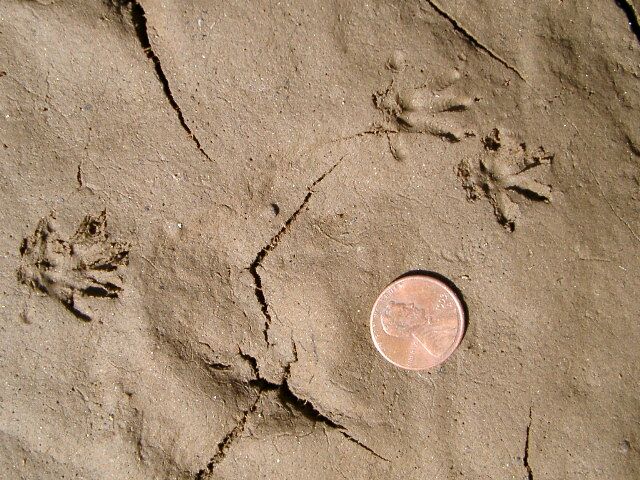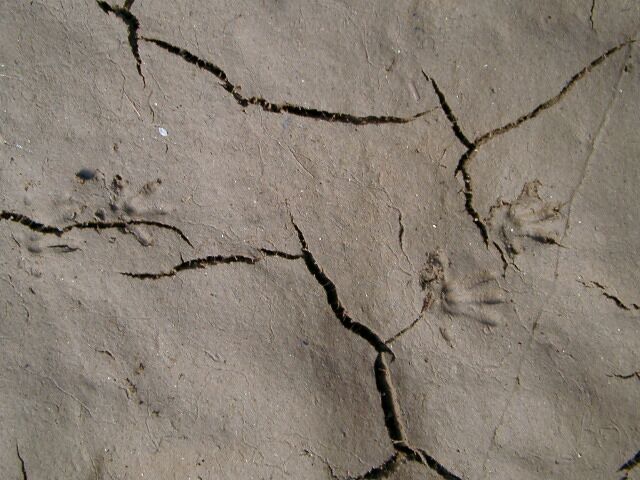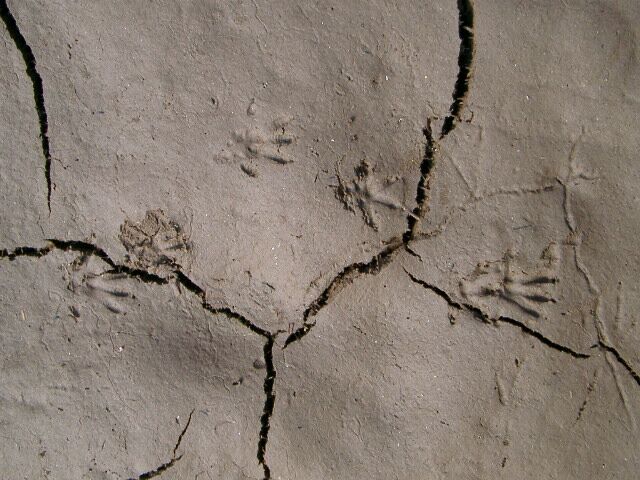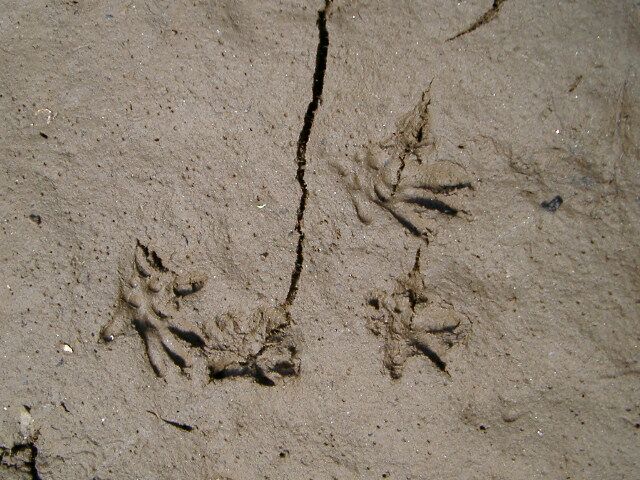Species
Dusky-footed woodrat found in a woodlot in the Willamette Valley of Oregon (dead of unknown causes). These are rather large rodents--the body was 8" long and the tail was 6.25" long.
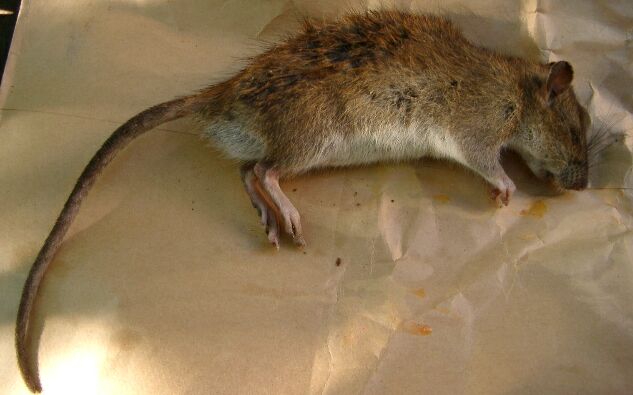
Front and hind feet of the woodrat. The hind foot was 1.5" long. Like most rodents the toe pattern for woodrats is 4 front and 5 hind (4f5H).
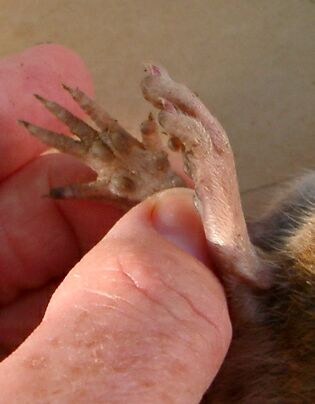
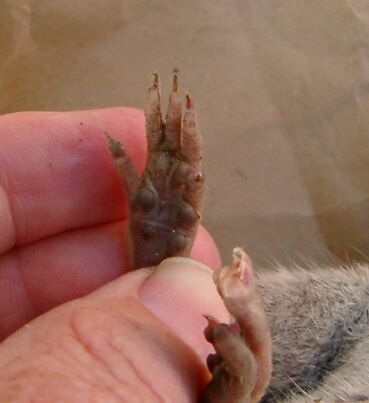
Oregon has three species of woodrat. The dusky-footed is a reddish brown with a sparsely-haired tail and dusky gray coloration down the front feet. As its name implies, the bushy-tailed has a heavily-haired tail compared to other woodrats. The desert woodrat is a lighter color and is found in the Great Basin region of the state.
